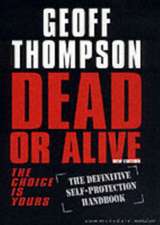The Causes of Crime: New Biological Approaches
Autor Sarnoff A. Mednick, Terrie E. Moffitt, Susan A. Stacken Limba Engleză Paperback – 10 iun 2009
Preț: 380.69 lei
Nou
Puncte Express: 571
Preț estimativ în valută:
72.85€ • 75.78$ • 60.15£
72.85€ • 75.78$ • 60.15£
Carte tipărită la comandă
Livrare economică 15-29 aprilie
Preluare comenzi: 021 569.72.76
Specificații
ISBN-13: 9780521111898
ISBN-10: 0521111897
Pagini: 392
Dimensiuni: 152 x 29 x 22 mm
Greutate: 0.57 kg
Editura: Cambridge University Press
Colecția Cambridge University Press
Locul publicării:New York, United States
ISBN-10: 0521111897
Pagini: 392
Dimensiuni: 152 x 29 x 22 mm
Greutate: 0.57 kg
Editura: Cambridge University Press
Colecția Cambridge University Press
Locul publicării:New York, United States
Cuprins
Introduction: Biological factors in crime causation: the reactions of social scientists Sarnoff A. Mednick; Part I. Methodological questions and implications: 1. Some cautions for the biological approach to crime causation Gordon Trasler; 2. Watch out for that last variable Malcolm W. Klein; 3. Implications of biological findings for criminological research David P. Farrington; 4. Definitions of antisocial behaviour in biosocial research Preben Wolf; Part II. Evidence for the role of genetics: 5. Genetic factors in the etiology of criminal behaviour Sarnoff A. Mednick, William F. Gabrielli, Jr., and Barry Hutchings; 6. Genetic and environmental factors in antisocial behaviour disorders C. R. Cloninger and I. I. Gottesman; Part II. Psychophysiological and neurophysiological factors: 7. Autonomic nervous system factors in criminal behaviour Peter H. Venables; 8. Electroencephalogram among criminals Jan Volavka; 9. Childhood diagnostic and neurophysiological predictors of teenage arrest rates: an eight-year prospective study James H. Satterfield; Part IV. Neurological factors: 10. Cerebral dysfunctions and persistent juvenile delinquency W. Buikhuisen; 11. Violent behaviour and cerebral hemisphere function Israel Nachshon and Deborah Denno; 12. Perceptual asymmetries and information processing in psychopaths Robert D. Hare and John F. Connolly; Part V. Biological Factors: 13. The neuroendocrinology and neurochemistry of antisocial behaviour Robert T. Rubin; 14. Testosterone and adrenaline: aggressive antisocial behaviour in normal adolescent males Dan Olweus; 15. Personality correlates of plasma testosterone levels in young delinquents: an example of person-situation interaction? Daisy Schalling; 16. Metabolic dysfunctions among habitually violent offenders: reactive hypoglycemia and cholesterol levels Matti Virkkunen; Part VI. Treatment Issues: 17. The role of psychosurgical studies in the control of antisocial behaviour Mark A. J. O'Callaghan and Douglas Carroll; 18. Pharmacological approaches to the treatment of antisocial behaviour C. R. Cloninger; Indexes.
Descriere
The Causes of Crime: New Biological Approaches offers the first comprehensive overview of the biological factors involved in criminality.












